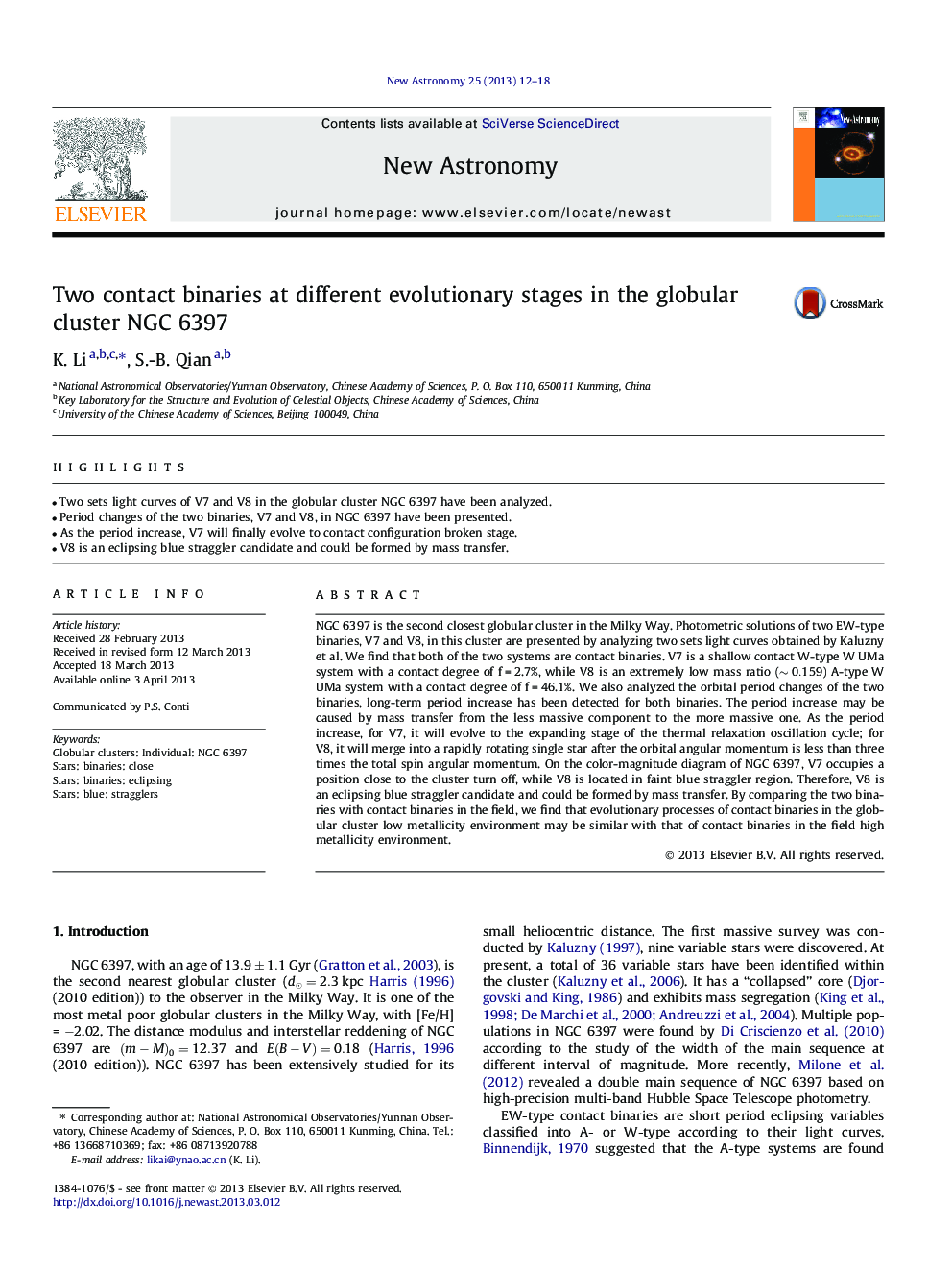| Article ID | Journal | Published Year | Pages | File Type |
|---|---|---|---|---|
| 1779026 | New Astronomy | 2013 | 7 Pages |
•Two sets light curves of V7 and V8 in the globular cluster NGC 6397 have been analyzed.•Period changes of the two binaries, V7 and V8, in NGC 6397 have been presented.•As the period increase, V7 will finally evolve to contact configuration broken stage.•V8 is an eclipsing blue straggler candidate and could be formed by mass transfer.
NGC 6397 is the second closest globular cluster in the Milky Way. Photometric solutions of two EW-type binaries, V7 and V8, in this cluster are presented by analyzing two sets light curves obtained by Kaluzny et al. We find that both of the two systems are contact binaries. V7 is a shallow contact W-type W UMa system with a contact degree of f = 2.7%, while V8 is an extremely low mass ratio (∼0.159∼0.159) A-type W UMa system with a contact degree of f = 46.1%. We also analyzed the orbital period changes of the two binaries, long-term period increase has been detected for both binaries. The period increase may be caused by mass transfer from the less massive component to the more massive one. As the period increase, for V7, it will evolve to the expanding stage of the thermal relaxation oscillation cycle; for V8, it will merge into a rapidly rotating single star after the orbital angular momentum is less than three times the total spin angular momentum. On the color-magnitude diagram of NGC 6397, V7 occupies a position close to the cluster turn off, while V8 is located in faint blue straggler region. Therefore, V8 is an eclipsing blue straggler candidate and could be formed by mass transfer. By comparing the two binaries with contact binaries in the field, we find that evolutionary processes of contact binaries in the globular cluster low metallicity environment may be similar with that of contact binaries in the field high metallicity environment.
